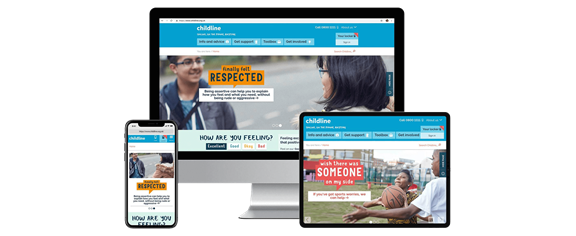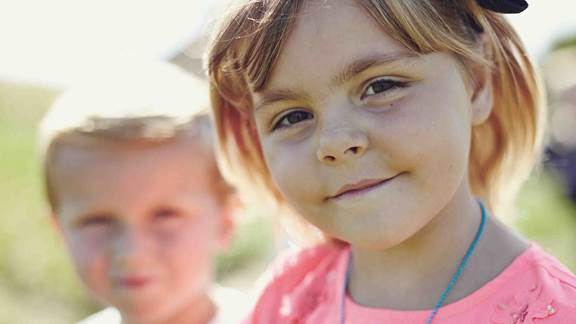Childline’s free, confidential service helps children and young people in the UK at any time, whatever their worry. 8,000 volunteers provide 348,000 pieces of advice each year. And it’s not enough. With demand continuing to grow, Childline wanted to put children at the heart of its digital services with an UX design transformation that would give them more access to the help they need, when they need it, in the format that’s right for them. Our work means 12,000 more children are accessing the ‘Contact Childline’ every month.
Putting children first by transforming UX design
Childline

A growing demand

Setting objectives
To meet Childline’s requirements, we developed a UX strategy by talking to users and volunteers. The result was a programme of practical deliverables leading to a new website. This programme included:
- Improving Childline’s reach by engaging children across more channels – mobile, social, phone and chat services
- Delivering cross-device performance· Scalability, with multiple online routes to support
- Improving accessibility of content by meeting users’ preferences in a wider variety of ways, from self-help to peer-to peer to counsellor-led
- Making it simple to create flexible content across a range of thematic priorities
- Catering to diversity in terms of age, reading ability, emotional state and ability to articulate feelings
- Flagging the most urgent cases to Childline counsellors
- Meeting the needs of first time visitors and regular users requiring ongoing support
Creating a trusted friend
Our UX research highlighted the importance of personalisation for Childline. Each user needed to feel as though this was their service. Creatively we were inspired to design a service that was more than simply ‘engaging’. It needed to be a safe, trusted friend.
Targeted content
We met the need for 1:1 personalisation by tailoring and targeting content – a facility led by a mood tracker. Available from the homepage, the feature asks users how they feel. Selecting one of the options (from ‘Excellent’ to ’Depressed’ determines the content presented, reinforcing feelings of wellbeing on good days, and identifying those most at risk on the bad ones.
Help without words
To eliminate barriers, we developed onsite tools to enable the sharing of feelings without using words. The artbox facility, for example, enables users to draw their feelings rather than explain them. Online services were designed to support more deaf and speech impaired children than ever before, allowing them to engage directly with the charity only when they felt ready to do so.
Safe and secure
Protecting the privacy and security of the children who used the service presented unique challenges. We developed a facility enabling users to join privately without email details, and introduced additional checks to ensure safety and anonymity is preserved.
To protect users whilst on the Childline site, we created an ever-present ‘hide page’ button, enabling users to flick instantly to a new site, if needed.

Supporting the service
Our application of new technology has enabled Childline’s counsellors and volunteers to do more with less. Caseload management is easier as a result of stronger signposting and the ability to triage patients in queues. We also integrated Childline’s call centre workflow systems, completely overhauling the way its data sets work together.
Additionally, our team created a CMS on the Episerver platform that opens up opportunities for continuous enhancements as the organisation grows and develops.
The results
Childline has found that its new site has broadened the organisation’s ability to provide strong, personalised and wide-reaching support. It can now distribute more content more quickly, responding more effectively to the mood and needs of the user. Counsellors have more tools at their disposal and can respond to the most urgent cases as soon as they arise.
Working with Kin + Carta Connect and young people to design this website was an exceptional experience. We knew we needed to create something that was technologically robust and able to safely deliver the vital service so many children and young people need. We also knew we needed to use the very best in digital UX design.
Helena Raven Associate Director at the NSPCC
Learn more



